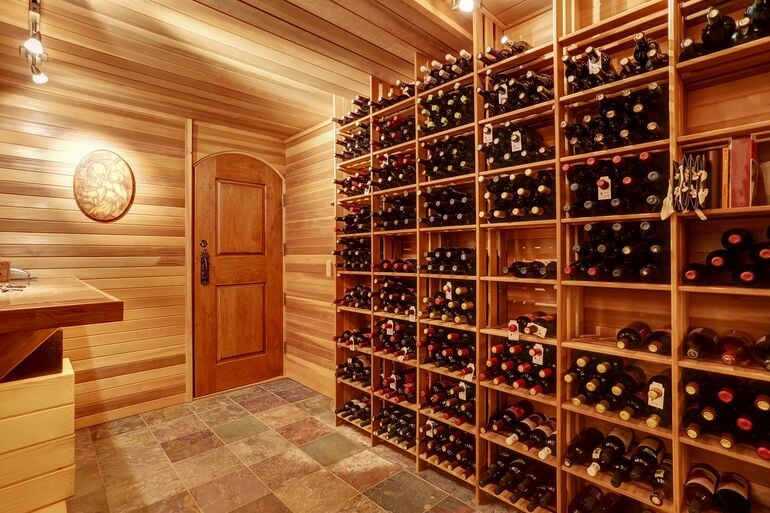Start 14-Day Trial Subscription
*No credit card required

How Do Wine Cellar Cooling Units Work? Benefits For Beer Connoisseurs
One of the oldest trades in human history is the production of wine and beer. The oldest evidence of wine dates back to 7,000 BC in China, with the first concoction believed to have been made from the fermentation of either fruit or honey. Beer production, however, as studies suggest, began between 8,500 to 5,500 BC in the Raqefet Cave, which is north of Israel. Wild yeasts in the air ended up mixing with cereals like barley and malt, resulting in an unexpected fermentation that turned it into beer.
These pieces of evidence have proven how much wines and beers have traveled through time with humans in the evolution of culture and society. As the technology evolved, its storage has upgraded from just barrels of wood into giant, metal containers that can be stored in different settings.
Wines, on the other hand, are preserved in wine cellars or storage areas with a special cooling appliance called a wine cellar cooling unit, which helps to maintain the ideal temperature for its aging process and for flavor preservation. Don’t mistake it for a wine cooler though. Cooling units are like air conditioners installed in the wine cellar or the main storage room that houses the wine bottles. Wine coolers, on the contrary, are like refrigerator units, which means wines are placed inside the unit itself.
Now, if you love both wine and beer, and you have a wine cellar (or you’re thinking of building or repurposing one), you might wonder if you can use it for both alcoholic beverages. Will it benefit your beer? And would it be worth your investment? To answer that, let’s first talk about how these systems work, beginning with their many types.
Types Of Wine Cellar Cooling Systems
- Self-Contained Cooling Units
This compact unit combines both the evaporator and condenser inside. It’s easy to install and use right out of the box as it doesn’t need a drain while ducts are only optional. All you need is ample passthrough space in the wall and some external space to dissipate heat outside the cellar. The only downside of this compact unit is the noise it makes since the condenser is within the unit.
Nonetheless, if you’re a new connoisseur on a budget or have limited storage space available, this is the best option as it’s the most affordable and won’t require professional installation services.
If this sounds like the right choice for you, you can buy self-contained cooling units at Winecellarhq.com here. Self-contained cooling units come in many models with different capacities. There are also models with an electric control panel.
- Duct Systems
Ducted wine cooling units fill up the cellar with cold air using ducts, with the main unit installed in a separate area or utility room. Although this means it requires more space, running it will be quiet. In fact, it’s the quietest of all types of wine cooling units. Humidity control may also be integrated if you want. However, it requires professional installation, which will be an added expense if you don’t have the skills for it.
But if budget is not a question and you have a bigger storage area, this can be an ideal choice. If you’re particular with aesthetics and design, this can suit any custom wine cellar theme you want as it’s the most flexible in terms of installation and style.
- Split-Type Systems
As the name suggests, this unit separates the condenser from the evaporator, which connects to each other through a line set. On installation, the evaporator goes inside the cellar, usually on the wall. But if you need humidity control, it’ll have to be a separate unit.
This type of wine cooling system is the middle ground among all other types. It’s cheaper than the duct system, and it’s a lot quieter than the self-contained units. So, if you have a large cellar but your budget is kind of in the middle and you don’t mind aesthetics so much, this is the way to go.
Using Wine Cellars For Beers
So, can you use wine cooling systems for your beer? The answer is yes. Like wine, beers also require varying levels of temperature depending on the variety. If you love both wine and beer and regularly keep dozens of cans and bottles at home, a wine cooling system can be an excellent investment.
Here are several ways wine cellar cooling units can benefit your beers:
- Optimum Storage Conditions For Beer Preservation
The ideal storage conditions for beer and wine are about the same. Both are best stored in dark places without sunlight, with cool temperatures, and high humidity. The ideal levels of temperature and humidity will only vary depending on the type of wine or beer.
However, if you’d like to store both wine and beers in your cellar, the middle temperature range of 50-55°F will be the best compromise. This mid-range is also known as the ‘cellar temperature.’ As for the humidity, you can keep it around 60% for optimum preservation and avoid degradation.
- Consistent Temperatures For The Best Beer Flavors
The consistency of the recommended temperature during storage helps to bring out the full taste of any beer flavor. Beer geeks know how improper storage of beers can lead to a loss in flavor, so if you’re meticulous with beer flavor and want it to taste as it should all the time, storing them in wine cellars is a good idea.
In A Nutshell
Wine cellars aren’t just for wine. By setting it to a middle-range cellar temperature, beer connoisseurs can definitely benefit from them too. Just like wine, beers require the right storage conditions to preserve their flavor profile and to keep it aging if desired. Cooling systems used in wine cellars can be expensive, but there are now many models that will suit any connoisseur’s preference.
If you’re considering using wine cellar cooling units, always take into account your budget, storage room size, ease of installation, and the types of wines and beers you’ll be storing. You can also just start small and upgrade your collection as you learn more on your journey as a connoisseur, whether for wine, beer, or both.




